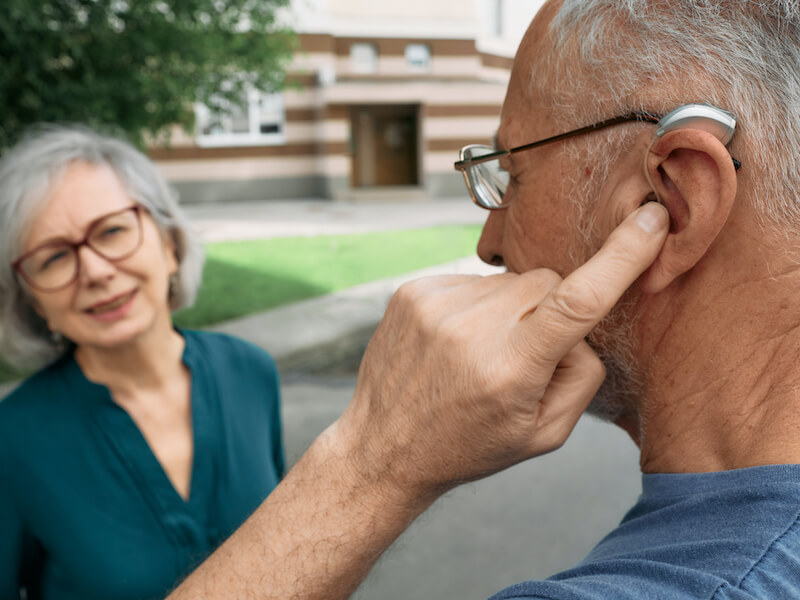
Have you ever been watching your favorite Netflix show when your internet abruptly cuts out? Instead of discovering who won the baking show, you have to watch a never-ending spinning circle. And so you just wait. Is it your internet provider, modem, router, or perhaps it will just come back on its own? It sort of stinks.
When technology malfunctions, it can be really aggravating. The same is certainly true of your hearing aids. When they’re functioning properly, hearing aids can help you stay connected with the ones you love and better hear co-workers when they talk to you.
But your symptoms of hearing loss can suddenly become extremely frustrating when your hearing aids stop working. The technology you’re counting on has failed you. Why would your hearing aids just quit functioning? So how do you cope with that? Well, there are three prevalent ways that hearing aids can fail, here’s how you can begin to identify and troubleshoot those issues.
Hearing aids can often have three common issues
Hearing aids are sophisticated devices. Even still, there are some common issues that people with hearing aids might experience. Here’s what might be causing those issues (and what you can do to correct them).
Whistling and feedback
Maybe you suddenly begin to hear a terrible high-pitched whistling while you’re trying to have a chat with a friend or relative. Or perhaps you notice a little bit of feedback. You begin to think, “this is strange, what’s up with this whistling”?
Feedback and whistling can be caused by these possible problems:
- You may not have your hearing aids correctly positioned in your ears. Try taking them out and putting them back in. If the fit isn’t correct you may need to come see us so we can help you get a better fit.
- The tubing that attaches the hearing aid with the earmold, on behind-the-ear models, can sometimes become compromised. Try to inspect this tubing as well as you can and make sure nothing is loose and the tube doesn’t appear damaged.
- Earwax accumulation in your ear canal can compromise how your hearing aid works. You’ll notice this comes up pretty often. Whistling and feedback are often one outcome of this sort of earwax accumulation. If possible, you can attempt to clean some earwax out of your ear or consult with us about the best way to do that (do not use a cotton swab).
If these problems aren’t easily resolvable, it’s worth talking to us about adjusting the fit or sending your device in for maintenance (depending on what we determine the root cause of that whistling or feedback may be).
No sound coming from your hearing aids
The main objective of hearing aids is to generate sound. That’s what they’re made to do! Something has certainly gone wrong if you don’t hear any sound coming from your hearing aid. So what could be the explanation when hearing aids work but no sound comes through? Well, there are a few things:
- Earwax buildup: Yup, earwax strikes again. Examine your device for signs of earwax on the microphone or speakers or any sensitive bits. You want to make certain the device is good and clean.
- Power: Everybody forgets to turn their hearing aids on once in a while. Check for this first. This potential problem can then be eliminated..
- Your settings: If you have them, flip through your personalized settings. It’s possible your hearing devices are not on the right custom setting (so maybe your hearing aids think you’re in a gymnasium instead of around the kitchen table). This balance could throw off the sound you’re hearing.
- Batteries: If you have rechargeable batteries, make sure that they’re completely charged. And whether your batteries are rechargeable or not, it might be worth swapping them out for new ones.
If these steps don’t address your problems, we might have the solution. Whether repair, maintenance, or replacement is your next step, we will be capable of helping you figure that out.
Your ears hurt when you’re wearing your hearing aids
Perhaps your hearing aids are fine functionally but they hurt when they’re in your ears. And you’re probably wondering why your hearing aids would hurt your ears. You’re not as likely to use your hearing aids every day if they hurt your ears. So, what could be causing it?
- Fit: The fit of the device is the most obvious issue. Needless to say, when the fit is nice and tight, your hearing aids will work best. So when your hearing aids aren’t fitting quite right, there can be some discomfort. Some hearing aid models can be fit to the specific shape of your ears. The better the fit, the fewer problems you’ll have with discomfort over the long run. If you come in for a consultation, we can help you achieve the best fit for your device.
- Time: Sometimes, it just takes a little while to get used to your hearing aids. How long will depend on the individual. When you first get your hearing aids, we can help you get a realistic concept of the adjustment period you can expect. Also, speak with us about any discomfort you may be having.
Take your new hearing aid out for a test ride
Before you commit to a pair of hearing aids, it’s a good plan to try them out for a while. In most cases we’ll let you test out a pair of devices before you determine that’s the pair for you.
As a matter of fact, we can help you identify the best type of hearing aid for your requirements, adjust the fit to match your ears, and help you manage any ongoing problems you might have with your devices. In other words, when your devices stop working, you’ll have a resource that can help!
And that’s a lot more than you will get from an over-the-counter hearing aid!

